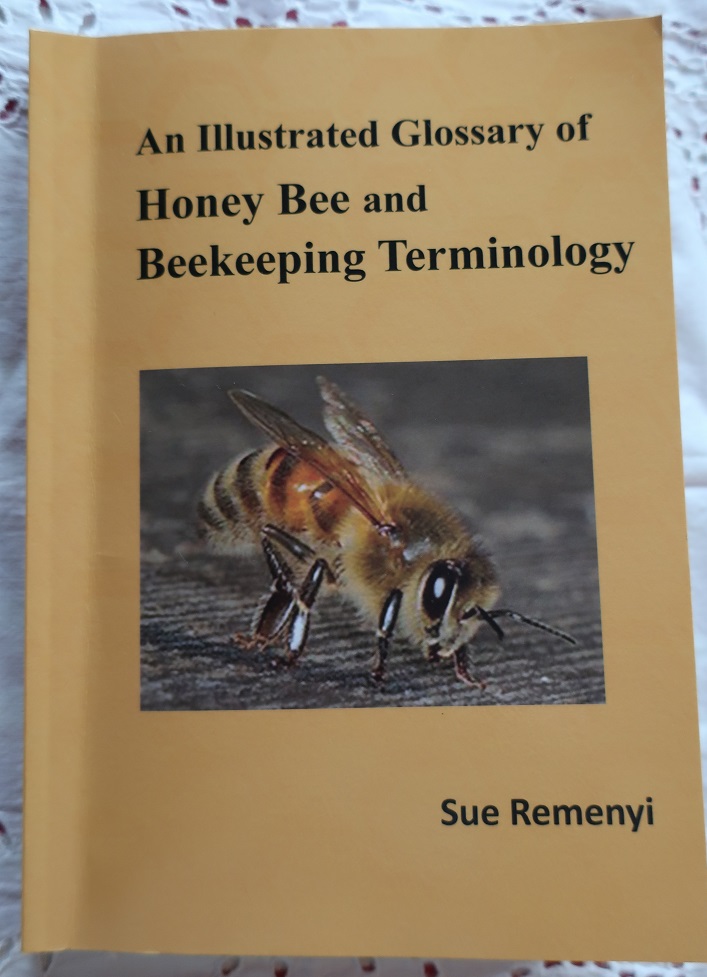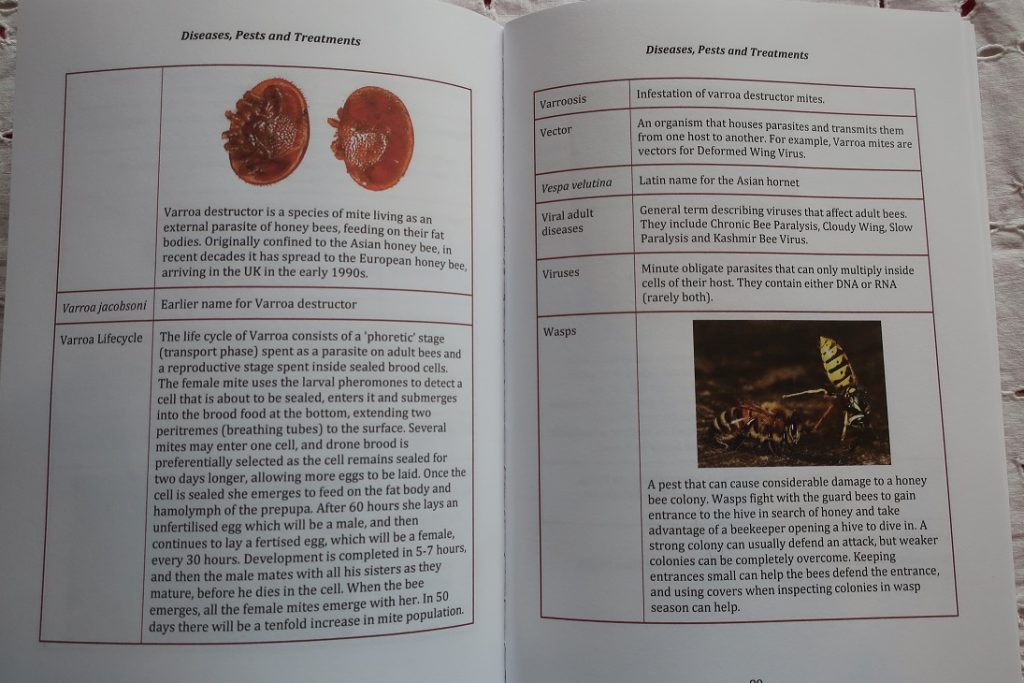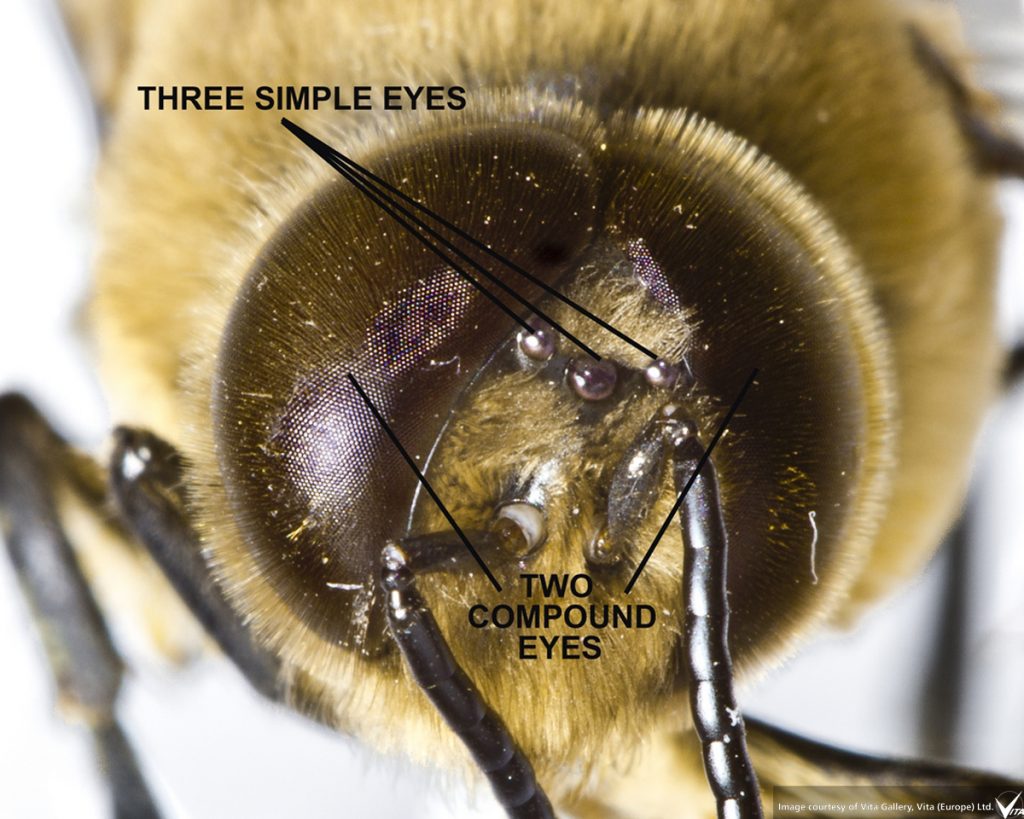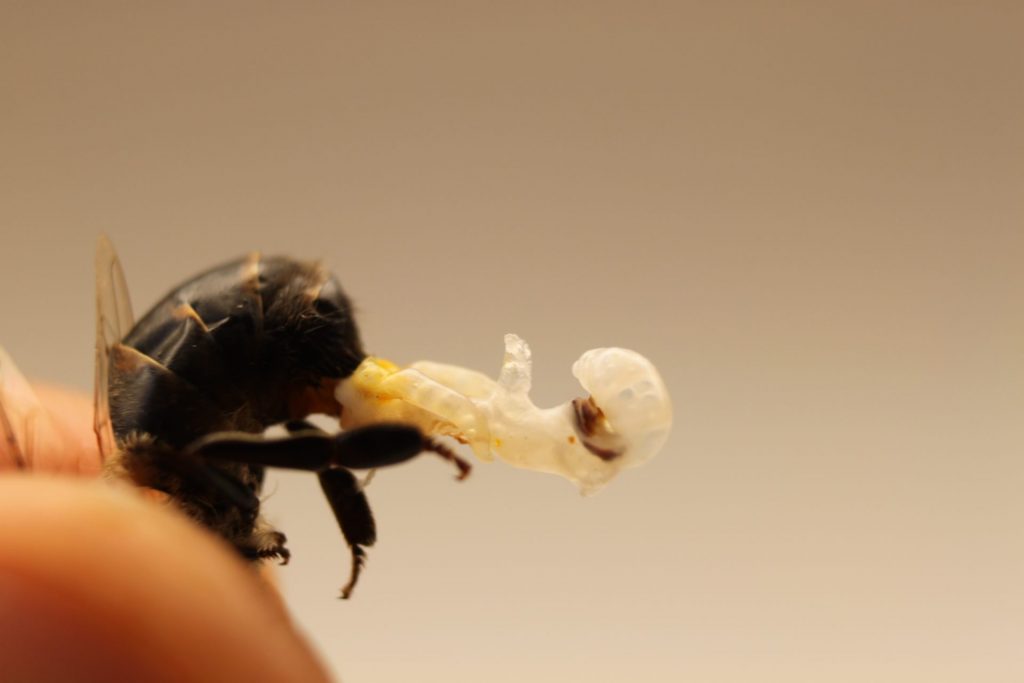
Book Review.

Sue Remenyi has been keeping bees in England for 10 years. As in all specialist hobbies and crafts, there are a lot of new terms and a lengthy vocabulary to learn; beekeeping is no exception. Sue discovered early on a dearth of information in one handy place and so she set about producing a compact glossary of terms to help new beekeepers better understand the honey bee, and the art, science, and craft of beekeeping.
Already a well-published author in the field of information technology, Sue was well placed to produce this little gem. When not busy with the bees, Sue, who is semi-retired from the family business, is an active member of her village community, Governor of the local primary school, and Editor of the Parish Newsletter.

Book Title: “An Illustrated Glossary of Honey Bee and Beekeeping Terminology”
Author: Sue Remenyi
Publisher: ACPL, Reading, United Kingdom
ISBN: 978-1-912764-84-6
Price: £14:95
Number of pages: 188
Available from Northern Bee Books.
An Illustrated Glossary of Honey Bee and Beekeeping Terminology by Sue Remenyi is exactly what is says it is; an alphabetical list of names and terms. It helps the reader better understand the countless unfamiliar terms that a new beekeeper comes across when learning about the hobby. There are eight sections in this book which include honey bee anatomy and physiology, diseases, pest and treatments, beekeeping, and flowers and pollen. So, a wide range of well- illustrated subjects are described and named in this book.
If this compact book will not easily fit in your pocket it can be carried in the apiary toolkit for ready reference, and will be a great addition to your library. It is produced on good quality paper with a nice feel on handling. The photographs enhance the book and they are clear. The illustrations in the anatomy and biology sections are very well done and original with coloured parts making for clearer descriptions.
I like that this book fills a gap in the beekeeping books market and will become the companion for new beekeepers and those sitting beekeeping examinations. This book will also appeal to curious beekeepers who just wants to gain as much knowledge as possible to enable them to better care for their bees. It will also be useful to refer to while simply reading articles and other beekeeping books. It has been written for the UK beekeeper which means that a few of the terms may not be used in other countries but I think that it will still be a useful book to own wherever you live.
The first printed edition contains some factual errors, particularily in the behaviour section relating to dances and signals, but these have been corrected. Subsequent copies provide accurate information. Like all books, this one will become out dated as new information is discovered, but I know that the author plans to keep this book alive by updating and reprinting as necessary.
The Drone: Vision and Mating Behaviour.

Compared with the queen and worker, the drone’s two enormous compound eyes cover most of his head as you can see in the photograph above. Rusty Burlew covered honey bee vision perfectly in her guest blog https://www.beelistener.co.uk/honey-bees/rusty-burlews-bee-vision-guest-blog/ so I shall not repeat her detailed work.
Suffice to say the drone needs to be able to see the queen in flight, as he gets closer and pushes his way to the front of the queue, to grasp her and mate in the sky. Compared with humans, honey bees have poor eyesight but it is good enough to do everything that they must to survive. Unlike humans, they don’t have one adjustable lens in each eye, rather thousands of lenses with fixed focal lengths. Our lens is in the inside of each eye but honey bee lenses actually form the outer surface of the eye which you can see under a microscope. Each of these small lenses focuses only on a minute part of the image that it sees, and the only way that wide-field images can be created is for the lenses to be arranged in a hexagon with each lens pointing in a slightly different direction. Behind each one of these lenses there are several light detecting units called ommatidia or facets, but the image is always out of focus because the lenses focus the light slightly behind the detectors (1) and so the insect always sees a very low-resolution image just as we would if we manually defocussed our camera while looking through the lens. Drones have up to 8,600 ommatidia whereas the queen has around 3,000-4,000 and the worker has between 4,000-6,900. The optic lobe of the brain is larger in the drone because this is where the information from the ommatidia is processed and we know that there is more visual information coming in to the drone’s brain. The queen leaves the nest only to mate and swarm and she works in the dark the rest of the time, so her optic lobe is small. The worker has a medium sized optic lobe.
Mating.
Drones normally mate with virgin queens in the sky away from their apiary in drone congregation areas (DCAs). Queens travel further than drones to DCAs, and attending different ones means that they do not mate with their brothers (2). We know from research that drones typically leave their hives between 2:30-4 pm and undertake between 1-6 mating flights a day each lasting from 15-30 minutes. We believe, from previous work by the Koenigers (3), that DCAs are usually found where there is a depletion of the horizon and you find a valley with hills on both sides. They occur about 30-80 feet above ground and around 15,000 drones gather at any one time.
The naturalist and parson Gilbert White (1727-1793) of Selbourne was one of the first people to identify a drone congregation area. Kim Flottum, former editor of America’s Bee Culture magazine, came out of a diner once and found himself standing in the carpark underneath a DCA. The floor was littered with dead drones displaying everted penises.
Until recently, most of the research on DCAs has been carried out using tethered queens, or pheromone lures. Very recent research using harmonic radar tracking (4) suggests that using pheromones or tethered queen to find DCAs may attract drones to areas that they may otherwise not visit. In effect, artificial DCAs are being created during this method of research.
Drone behaviour has been observed using individual drone tracking technology, and it is interesting to learn that they take one or two orientation flights fairly close to their hives before they set off in search of a virgin queen. Because drones live only a few weeks their ability to locate DCAs cannot be attributed to information passed on by other drones, and the cues they use to find the DCAs are most likely be found close to the hive in the landscape patterns.
Rather than congregating in one large area along with thousands of other drones, new research shows that drones share routes or flyways which take them to several different DCAs during one flight where as few as 68 drones may congregate at any one time. Individual drone patrols these DCAs in a similar way to young men checking out several different nightclubs on a lad’s night out. A drone might visit 5 DCAs during one flight.
There is still much to be discovered but these new findings are useful and tell us that the flyways may be of more importance than the actual DCAs in attracting drones.

When the drone catches up with a queen he grasps her abdomen from the sides with his four front legs, and his back legs grip her abdomen from below. He is able to hold on tightly and align his abdominal tip with hers. The queen opens her sting chamber and the drone inserts his endophallus (penis) in rather a complicated aerial activity involving flying fast at the same time to keep up with her. The act of sex involves the drone contracting his abdominal muscles which forces most of the haemolymph into his endophallus which causes it to shoot out partially everting like a kitchen glove blown inside out. A popping sound might be heard as air rushes in to fill the spaces left by the drained haemolymph. The queen uses her muscular contractions to fully evert the drone’s endophallus after it enters her. She contracts several muscles which ensures full eversion and the sperm is transferred to the queen’s lateral oviducts. Because of the loss of haemolymph, the drone basically falls back paralysed in shock but the hairy patch on his apparatus acts like Velcro and helps him cling on aided by the partially everted horns of his endophallus until the sperm has been transferred. Then he falls back and to the ground as the tissue peels away leaving remnants (mating sign) inside the queen along with a plug of mucus. The drone has been successful; he has made the ultimate sacrifice to pass on his genes. The mated queen carries on flying and the next drone removes the mating sign, and so on….
Implications for Beekeeping.
Like many other species of plants and animals, honey bees are protandrous which means that the males mature before the females. This is useful for us in beekeeping because when we see the first well- formed drones flying in the season, we can start our weekly inspections for queen cells knowing that the colony may be preparing to swarm. They would not swarm without the means for a new queen to be mated.
If there is a dearth of income during the beekeeping season the drones are the first to be refused food and you may find lots of drones being evicted from the colony. Where I live in the north of Scotland, sometimes there is a shortage of nectar in June when the spring crop nectar flow ends before the summer flowers begin. We call this the June gap but it can occur anytime and might result from a drought and nectar drying up. If you see brood being evicted then the problem may be more serious and the colony could be on the verge of starvation.
Drones have no sting unlike queens and workers. They can still be useful during wasp season and Margaret Anne Adams has observed them at the hive entrance preventing wasps gaining entrance. Drones are often used for marking practice in preparation for placing a coloured dot on a precious queen. Robust and bulky as they may appear, drones are in fact fragile and are easily damaged and killed by handling.
We know that varroa prefer larger drone cells to breed in because they are sealed for longer than worker cells and give varroa better reproduction rates so we can remove 100 drone pupae as a means of assessing varroa population. Drone removal can be used as a tool in integrated pest management. Some people use drone comb to trap varroa but thoughtful consideration is required here because drones are costly to produce. They are valuable and essential to good colony health, and the reproductive health of the wider honey bee populations.
Some viruses are transmitted in drone sperm and passed on to the queen during mating then vertically transmitted to the eggs. Pesticides affect sperm quality and extreme temperatures may damage them also. This accounts partly for the shortened reproductive lives of some queens, especially imported queens that may be have been subjected to fluctuating temperatures during transit. Diseases such as nosema affect sperm quality and may cause infertility in queens. So, individually, beekeepers can positively influence local populations of honey bees by thoughtful management and close attention to apiary hygiene along with respect for the drone.
References:
(1) Ibbotson, M., 2019, How Do Bees See? BBKA News Incorporating The British Bee Journal, January 2019.
(2) & (3) Koeniger G, Koeniger N, Ellis J, Connor C, (2014) Mating Biology of Honey Bees, Wicwas Press, Kalamazoo, Michigan.
(4)file:///C:/Users/ann/Documents/Research%20Articles/Woodgate’s%20drone%20tracking..pdf

Just read all three ‘Drone’ posts together. Super series Ann. Well done, so informative.
Thank you for commenting so postively, Stephen. I’m glad that you enjoyed them. Best wishes from Ann.